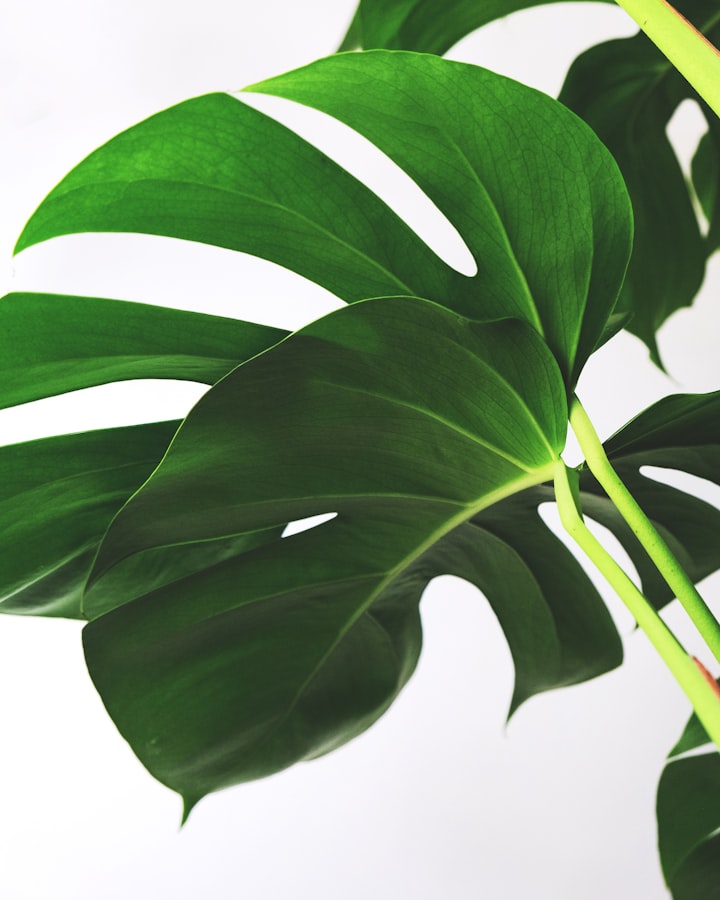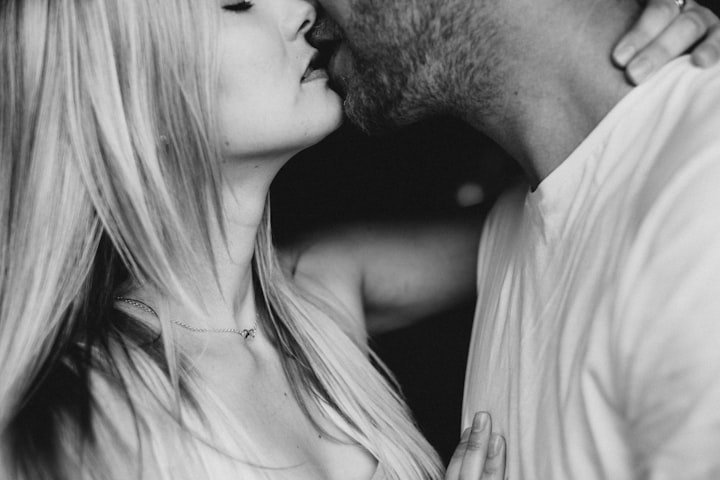In recent years, a new trend has taken hold in the world of pets - the ownership of houseplants. As people become increasingly aware of the benefits of bringing greenery into their homes, the idea of caring for plants as pets has gained traction. Plants are more than just decorations; they provide fresh air, improve mood, and require much less upkeep than traditional pets like dogs or cats. In this article, we will explore the growing trend of plant ownership, the benefits of having greenery in the home, tips for selecting and caring for your plants, and how this trend is changing the landscape of pet ownership.
Plants as New Pets
Pets are family but, Plants might not wag their tails or purr when you pet them, but they offer unique benefits that traditional pets can't match. They can brighten up any room and add a touch of nature to your decor. Plus, they can boost your mood and productivity by providing a calming and relaxing atmosphere. Many plant owners even talk to their green companions, treating them like members of the family.
The Rise of Indoor Plant Ownership
Indoor plant ownership has been on the rise in recent years, with millennials and younger generations driving the trend. Social media platforms like Instagram have played a big role in popularizing plant ownership, with hashtags like #plantparent and #indoorjungle gaining popularity. As more people become aware of the benefits of plant ownership, the trend is likely to continue.
Low-Maintenance and Cost-Effective
Plants are low-maintenance and cost-effective compared to pets. They don't require daily walks, grooming sessions, or expensive food. Plus, they can live for years with the right care, making them a long-term investment.
Improved Indoor Air Quality
Plants are natural air purifiers, removing toxins and pollutants from the air and releasing oxygen. This can improve your indoor air quality and promote healthier living.
Less Time-Consuming Than Pet Care
Caring for plants requires less time and effort than traditional pets. While you may need to water and prune your plant regularly, it's a relatively quick and easy process. Plus, you don't need to worry about finding a pet sitter or taking your plant to the vet.
Once you've chosen the perfect plant, it's important to care for it properly. Here are a few essential tips:
Watering and Fertilizing Guidelines
Most plants require regular watering and fertilizing to thrive. Make sure to follow the specific watering and fertilizing guidelines for your plant species. Overwatering or underwatering can harm your plant, so pay attention to its needs.
Effective Pest Control and Disease Prevention
Like traditional pets, plants can be susceptible to pests and diseases. Keep an eye out for common plant pests like spider mites and mealybugs. Preventative measures like cleaning your plant's leaves and soil can help reduce the risk of pests and diseases.
Pruning and Repotting Techniques
Regular pruning and repotting can help keep your plant healthy and thriving. Prune away dead or diseased leaves and stems to promote new growth. Repot your plant when it outgrows its current pot or when the soil becomes depleted.
With these tips, you'll be well on your way to becoming a proud plant parent. Happy planting!Designing Your Space: How to Incorporate Plants Into Your Home Decor
Plants are a great way to add a touch of nature and life to any space in your home. When it comes to incorporating plants into your home decor, there are several things to consider. One of the most important things to consider is the size and shape of the plants you want to incorporate.
Utilizing Different Plant Sizes and Shapes
By using different sizes and shapes of plants, you can create an interesting and visually appealing display. For example, you can mix tall and short plants, or add trailing plants to a shelf or hanging planter. You can also play with the shape of plants, such as using plants with round leaves and plants with spiky leaves to create contrast.
Choosing the Right Pots and Containers
Choosing the right pot or container for your plant is also an important factor to consider. Not only does it provide a functional home for your plant, but it can also add to the overall aesthetic of your space. Consider the color, material, and shape of the pot or container, and how it complements the plant and the surrounding decor.
Creating Eye-Catching Displays with Color and Texture
Lastly, adding color and texture to your plant displays can make them even more eye-catching and interesting. Consider using plants with different colored leaves or flowers, or adding decorative rocks, moss, or other types of natural material to the display.
The Rise of Plantfluencers: How Social Media is Affecting the Plant Parenting Trend
Plant ownership has become a popular trend in recent years, with many people sharing their love of plants on social media. These plant influencers, or "plantfluencers," are having a big impact on the plant parenting trend.
Exploring Social Media Platforms Dedicated to Plant Ownership
There are now social media platforms dedicated to plant ownership, such as Instagram accounts and YouTube channels. These platforms share tips and advice on plant care, showcase different types of plants, and provide inspiration for incorporating plants into home decor.
Influence of Plantfluencers on Plant Selection and Care
Plantfluencers have also had a significant influence on plant selection and care. Many people now seek out popular plant species that they see on social media, and use the advice and tips shared by plantfluencers to care for their plants.
Indoor garden with led benefits
Indoor gardening has been gaining popularity over the years, especially with the rise of sustainable and eco-friendly living. With the convenience of having fresh produce right in the comfort of your own home, people are now turning to indoor gardening as a way to grow and maintain their own herbs, vegetables, and even fruits. One of the key components to a successful indoor garden is the use of LED lights. In this article, we will explore the benefits of indoor gardening with LED lights, how to choose the right LED lights for your indoor garden, setting up your indoor garden with LED lights, tips for maintaining your indoor garden with LED lights, examples of successful indoor gardens, and answers to frequently asked questions.
1. Introduction to Indoor Gardening with LED Lights
What is Indoor Gardening with LED Lights?
Indoor gardening with LED lights involves growing plants indoors using LED (Light Emitting Diode) lights as the primary source of light. LED lights are highly energy-efficient and have quickly become the preferred choice of lighting for indoor gardens.
History of Indoor Gardening with LED Lights
Indoor gardening has been around for centuries, but it wasn't until the 1990s that LED lights began to be used as a primary light source. Since then, LED technology has advanced rapidly, and the use of LED lights in indoor gardening has become increasingly popular.
2. The Benefits of Using LED Lights for Indoor Gardens
Energy Efficiency
LED lights use significantly less energy than traditional lighting sources, which can save you money on your electricity bills. This efficiency also means that LED lights generate less heat, making them safer to use and reducing the need for ventilation.
Cost Savings
Not only do LED lights use less energy, but they also have a longer lifespan than traditional lighting sources, which means you'll save money on replacement bulbs over time. Additionally, LED lights emit light in a specific direction, reducing the need for reflectors and further reducing costs.
Plant Growth and Health
LED lights emit light in a spectrum that is ideal for plant growth, providing the right balance of red and blue light that plants need for photosynthesis. Additionally, LED lights can be tuned to specific wavelengths to optimize plant growth at different stages of development.
Customization and Flexibility
LED lights come in a range of colors and spectrums, allowing you to customize your lighting to best suit the needs of your plants. They're also compact, making them easy to install in a variety of locations, and can be easily adjusted to provide the right amount of light for your plants.
3. Choosing the Right LED Lights for Your Indoor Garden
Understanding LED Light Specs
When choosing LED lights for your indoor garden, it's important to understand the different specs, including wattage, spectrum, and PAR (Photosynthetically Active Radiation) output. These specs will determine the efficiency and effectiveness of the LED lights for plant growth.
Types of LED Lights for Indoor Gardening
There are several different types of LED lights available for indoor gardening, including panel lights, bar lights, and bulb lights. Each type has its own advantages and disadvantages, so it's important to choose the right type of LED light for your specific indoor gardening needs.
Factors to Consider When Choosing LED Lights
When choosing LED lights for your indoor garden, consider factors such as the size of your space, the number of plants you'll be growing, and the stage of growth your plants are in. Additionally, consider the brand and reviews of the LED lights, as well as your budget.
4. Setting Up Your Indoor Garden with LED Lights
Determining Your Space and Layout
Before setting up your indoor garden with LED lights, determine the space and layout of your garden. Consider factors such as the size and shape of your space, the number of plants you'll be growing, and the height of your LED lights.
Installing and Positioning Your LED Lights
Once you've determined your space and layout, it's time to install and position your LED lights. Hang the lights at the appropriate height and angle to ensure optimal coverage for your plants. It's also important to consider the distance between the lights and your plants to prevent burning.
Choosing and Preparing Your Plant Containers
Finally, choose and prepare your plant containers. Select containers that are appropriate for the size and type of plant you'll be growing, and ensure that they have adequate drainage. It's also important to choose the appropriate soil and nutrients for your plants to ensure healthy growth.What types of plants grow well under LED lights?
Ready to bring home a new leafy companion? Click here to get started with your plant growing journey now!







Comments
There are no comments for this story
Be the first to respond and start the conversation.